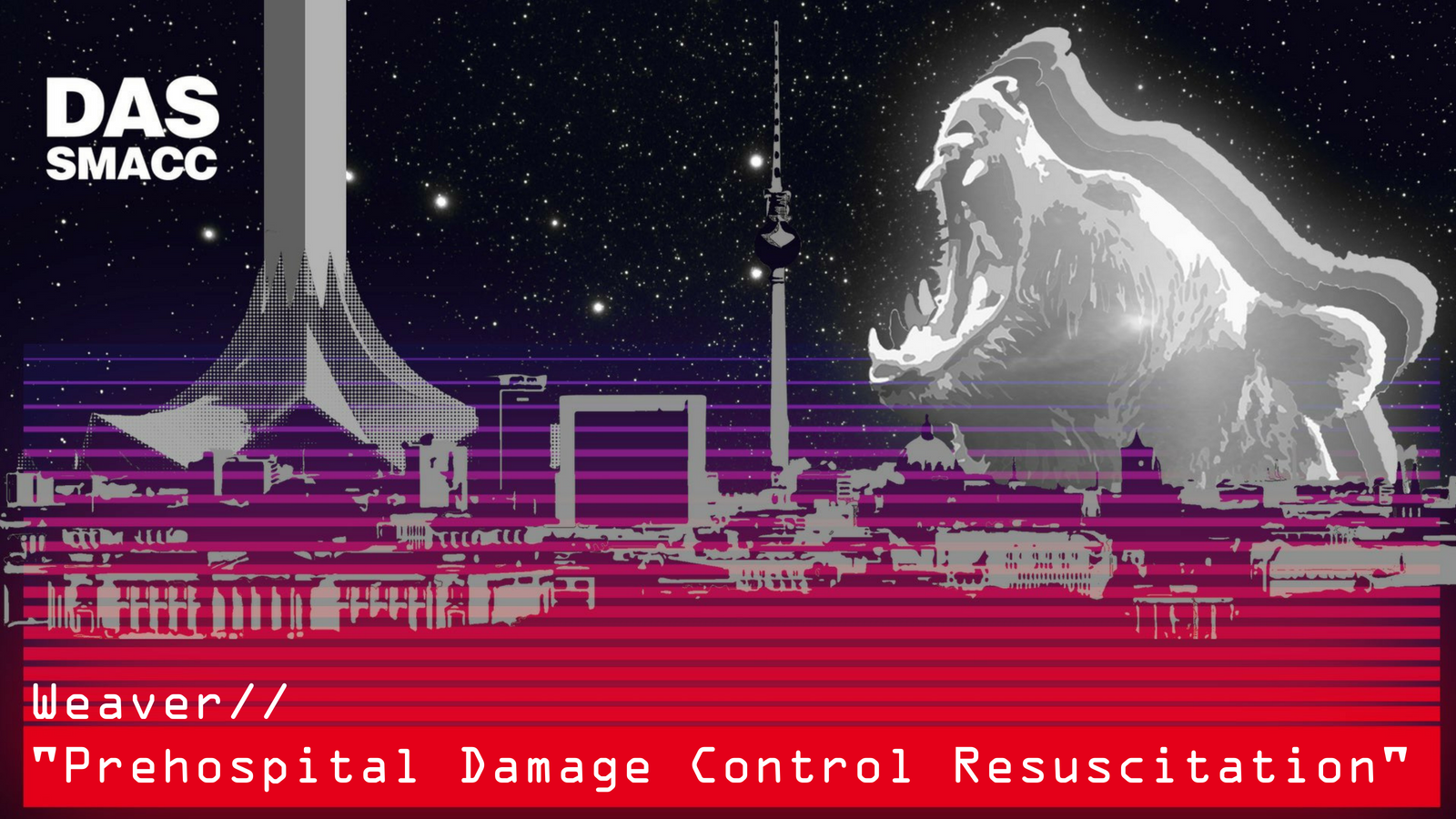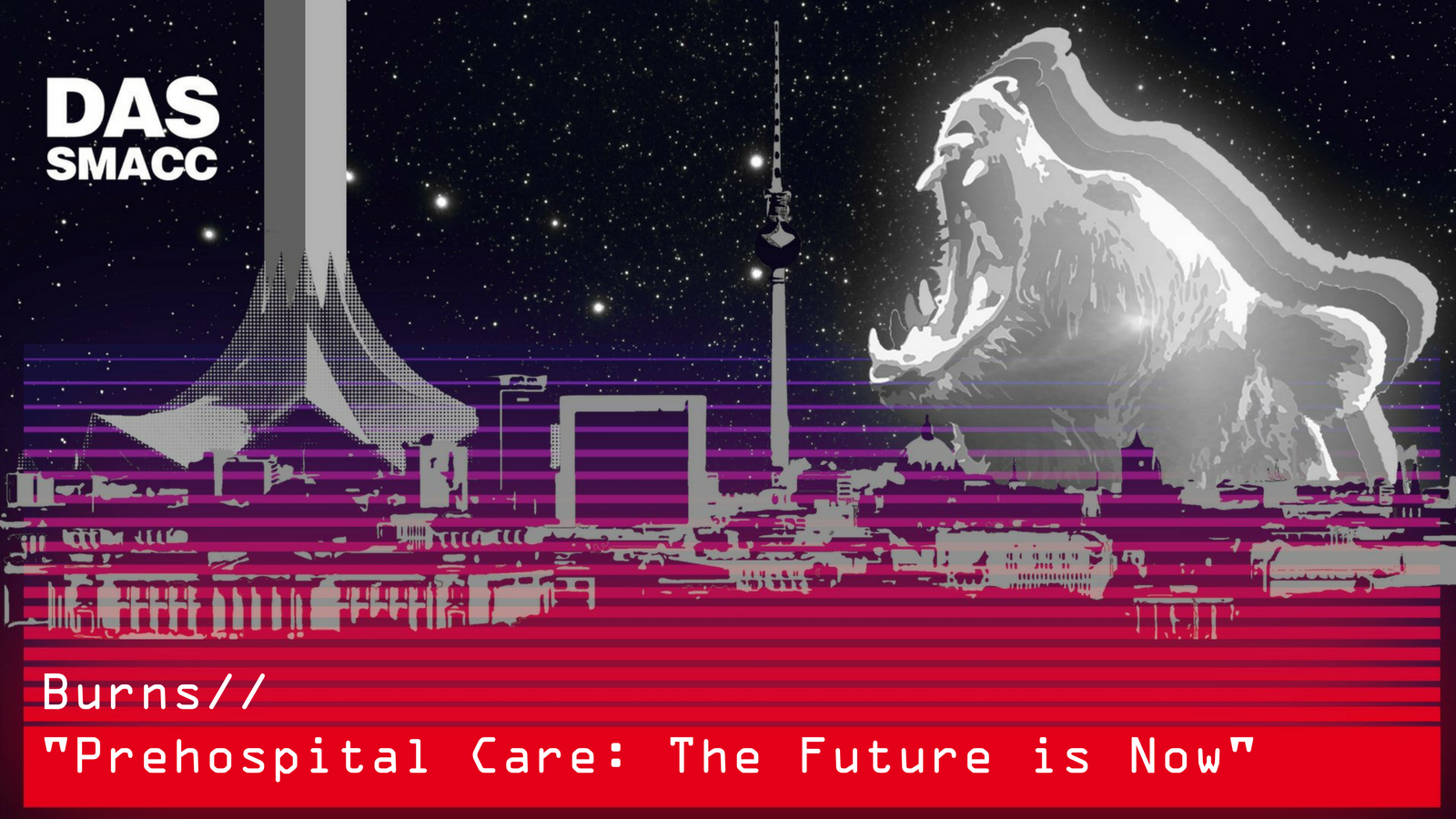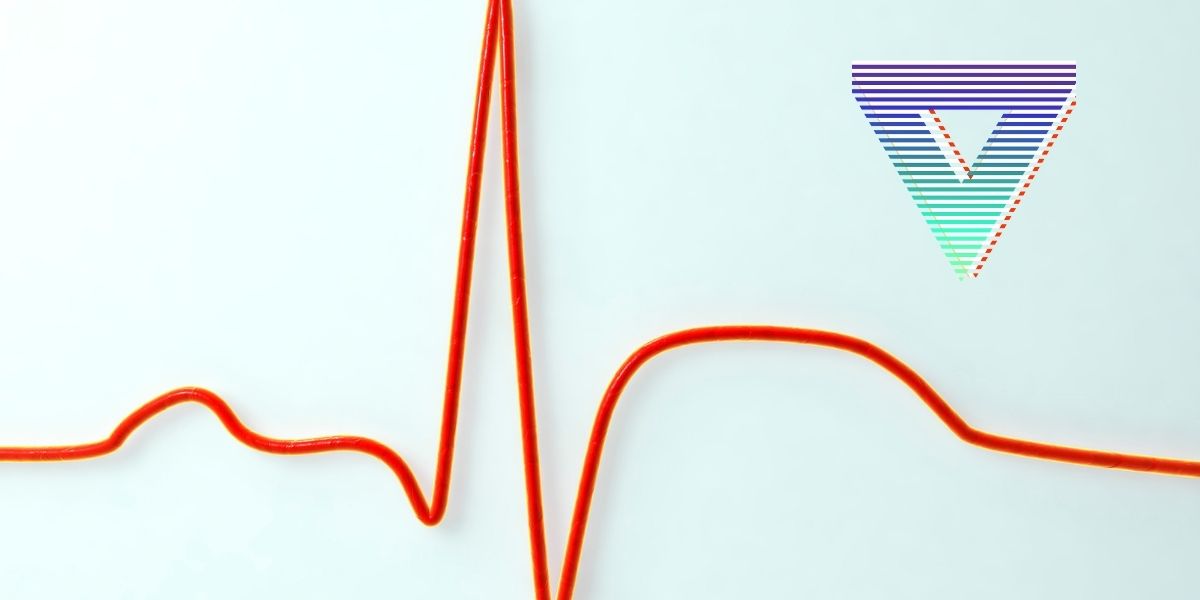Anne Weaver presents a rapid-fire overview of prehospital damage control resuscitation for shock and massive haemorrhage.
Anne reviews how this is currently managed and what the future in this space might look like.
Haemorrhage and trauma present a massive burden on health worldwide. 2 million patients bleed to death from trauma every year.
Evidently, in the NHS, 6 000 trauma patients per year have major or massive haemorrhage. 30% of these patients will die.
To address this challenge in London, Anne discusses the multifaceted approach to managing major trauma. A paramedic is always stationed in a control room and can dispatch the appropriate resuscitation team to the trauma scene by air.
Arrival is usually within 15 minutes. The teams comprise of a doctor and a paramedic. They carry a huge amount of gear. This includes drugs such as tranexamic acid and bicarbonate, splints, haemorrhage control equipment, temperature control, fluids such as packed red cells and tools to do advanced procedures such as thoracotomies and Zone 3 REBOA.
Different initiatives have been successfully trialled in London and disseminated internationally.
Once such initiative is the Cod Red protocol, a pre-hospital alert system.
This was introduced in London in 2008 and aims to ensure the right resources are prepared at the hospital, prior to the pre-hospital team arriving with the patient.
Alongside improvement in processes and treatments, this initiative has seen mortality rates for exsanguinating patients drop from around 60% to 30%.
Similarly, the decision to carry packed red cells on board has seen pre-hospital mortality decrease from 34% to 18%. This data shows the innovation of the London HEMS service.
Technology is also moving into the space of resuscitation for shock and massive haemorrhage. A device used to measure compensatory reserve index – developed in the US Army – is one example.
Using pulse oximetry, this small, portable device assists clinicians in decision making in pre-hospital resuscitation.
Questions remain… ideally the capacity to carry whole blood will be a near future improvement. In the meantime, Anne hopes that pre-hospital care can continue to impact the effect of trauma, shock and massive haemorrhage.
Prehospital Damage Control Resuscitation for Shock and Massive Haemorrhage.
Finally, for more like this, head to our podcast page. #CodaPodcast
Anne Weaver
Consultant in Emergency Medicine & PHEM (London’s Air Ambulance), Clinical Director of Trauma @ Royal London MTC & Barts Health NHS Trust.





